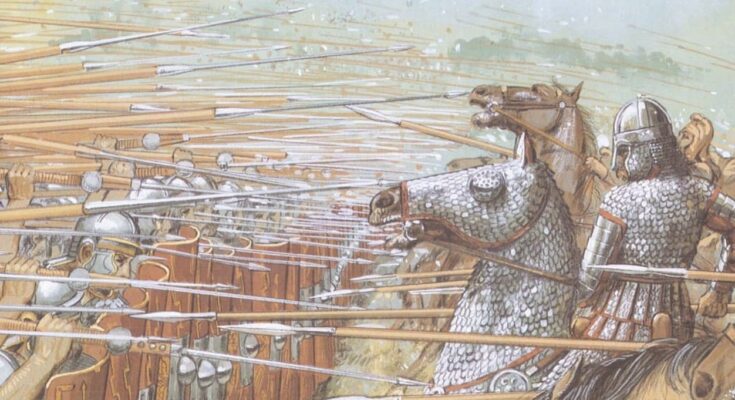Roman military tactics are renowned for their sophistication and effectiveness, particularly when countering cavalry charges. One of the most effective formations employed was the “repellere equites,” designed specifically to neutralize cavalry threats.
The ‘Repellere Equites’ Formation
In this formation, the first line of infantry would create a dense shield wall, interlocking their large scutum shields to form an impenetrable barrier. They would angle their pila (throwing spears) forward, presenting a formidable line of spearheads aimed at incoming cavalry. This arrangement made it extremely difficult for cavalry to break through the line. If enemy horsemen attempted to charge and halted before the shield wall, the second line of infantry would step forward, using their spears to drive the cavalry back, further reinforcing the defense.
Integration of Cavalry and Infantry Tactics
While the Roman legions were predominantly infantry-based, they recognized the importance of cavalry and integrated them effectively into their military strategies. Auxiliary cavalry units, often recruited from allied or conquered peoples, played a crucial role in supporting infantry formations. These cavalry units would operate on the flanks of the infantry, preventing encirclement and exploiting weaknesses in enemy lines. This combined-arms approach allowed for flexible responses to various battlefield scenarios.
Adaptation and Evolution of Tactics
Roman military tactics evolved in response to different cavalry threats. For instance, facing the heavily armored Parthian cataphracts and horse archers at the Battle of Carrhae, the Romans adapted by forming infantry squares. These square formations provided a stable defense against cavalry charges, allowing infantry to present a unified front and resist encirclement. This adaptability highlights the Romans’ tactical ingenuity and their ability to learn from and counter various cavalry tactics effectively.
In summary, the Romans’ strategic use of formations like the ‘repellere equites,’ their integration of cavalry and infantry tactics, and their ability to adapt to different cavalry threats underscore their military prowess and their capacity to effectively counter cavalry charges.




This website, you can discover a great variety of casino slots from famous studios.
Players can experience retro-style games as well as new-generation slots with high-quality visuals and interactive gameplay.
Even if you’re new or a casino enthusiast, there’s something for everyone.
casino games
All slot machines are available round the clock and designed for PCs and tablets alike.
No download is required, so you can start playing instantly.
The interface is intuitive, making it convenient to browse the collection.
Join the fun, and discover the thrill of casino games!